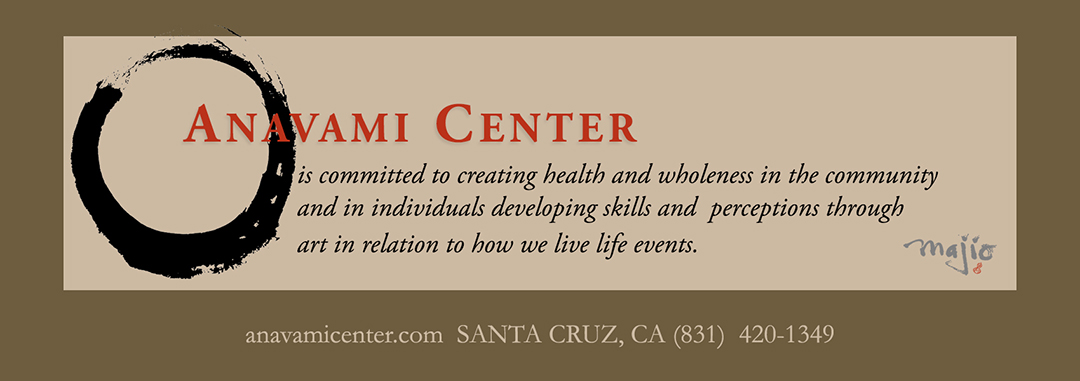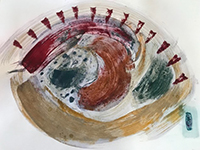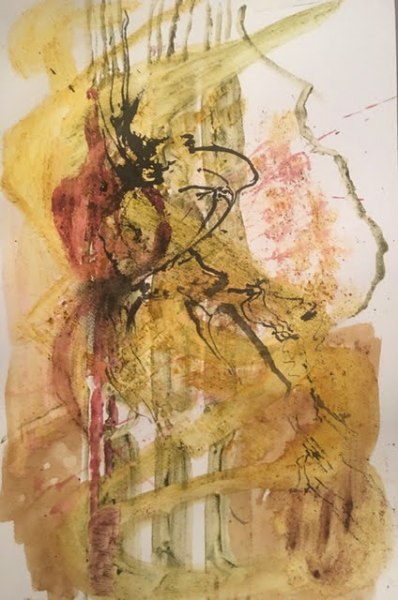Blog #4D Devotional

For some of us it was like sandpainting as we sprinkled powders over wet marks then brushing the excess way. For others, the colorants were in an ink-form. For all of us at first it was difficult not to use the colorants as art materials, to be under our control. The practice of conscious breathing supported the intention to participate in the act of honoring rather exerting our ideas, personality, ego. It was obvious to everyone that it was a different experience than making something. The theme of our work was to hold in our body the feeling of a special place that was safe, comforting and grounding. Honoring this place within us through the materials.
This is one of the podcasts that we took for inspiration from: Emerald Podcast, The Shape of Art, Place, Relevance, and the Living Force Between Adorer and Adored:
In this podcast Josh Schrei infers that our experience of art has been formed fundamentally by our museums and art history format. He talks about art as the state and quality of interaction, echoing John Dewey’s stance that art is experience. Schrei maintains that art re-enforces the animate force of life as a gateway for the experience of the animate force.
From David Whyte’s book, Consolations we evoked both the sense of Maturity and Resting, which underscored the sense of selfhood. They also confirm the somatic sense of dropping into the relaxation of the moment with no goal. Our practice with marking is to hold a greater perspective through presence that includes contradictions, not knowing and risking.
Maturity is the ability to live fully and equally in multiple contexts; most especially, the ability, despite our grief and losses, to courageously inhabit the past the present and the future all at once…Maturity calls us to risk ourselves as much as immaturity, but for a bigger picture, a larger horizon, for a powerfully generous outward incarnation of our inward qualities and not for gains that make us smaller, even in the winning.
Rest is the conversation between what we love to do and how we love to be. Rest is the essence of giving and receiving; an act of remembering, imaginatively and intellectually but also psychologically and physically. To rest is to give up on the already exhausted will as the prime motivator of endeavor, with its endless outward need to reward itself through established goals. To rest is to give up on worrying and fretting…
The template of natural exchange is the breath, the autonomic giving and receiving that forms the basis and measure of life itself. We are rested when we are a living exchange between what lies inside and what lies outside, when we are an intriguing conversation between the potential that lies in our imaginations and the possibilities for making that internal image real in the world; we are rested when we let things alone and let ourselves lone…one state of rest is…the sense of slowly coming home…the template of perfection in the human imagination….


